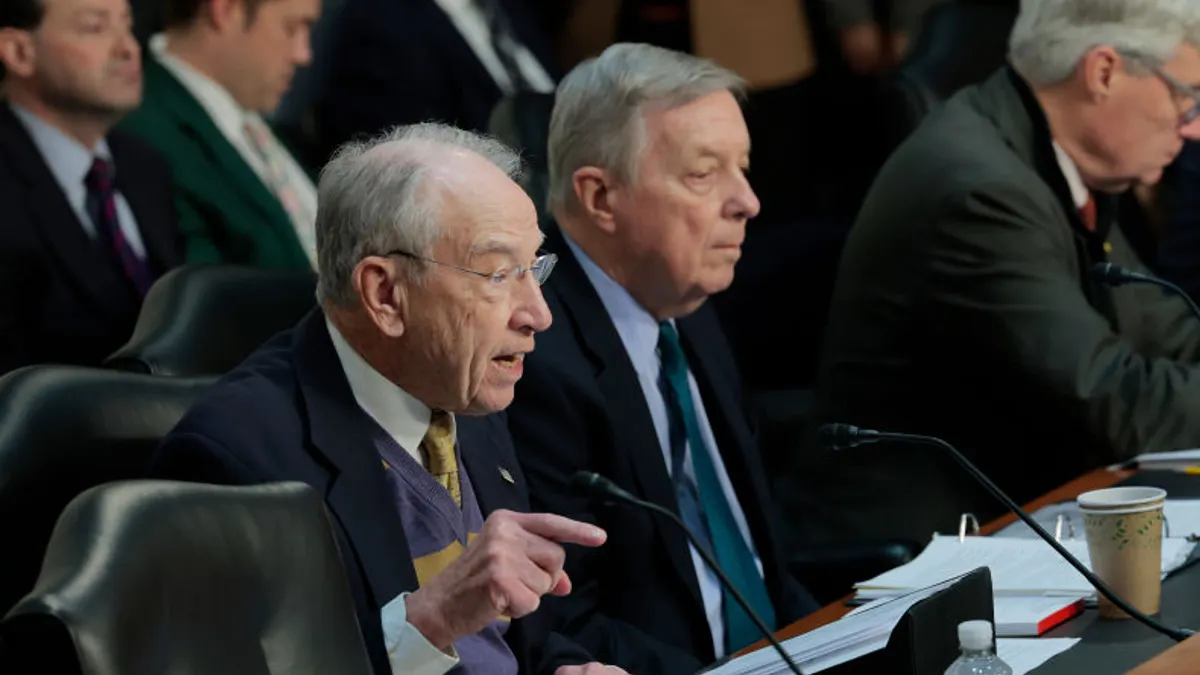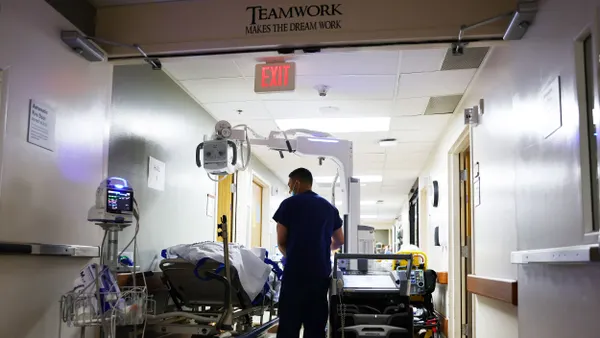Dive Brief:
- Physicians are working more than ever, but reimbursement isn’t rising in tandem. It’s a worrying mismatch that could translate into access problems for patients down the line, according to a new report.
- Physician productivity, as measured by a metric of how much work goes into providing a specific service, has grown 11% over the last two years, according to the report from consultancy Kaufman Hall.
- However, patient revenue per each work relative value unit dropped 7% over that time — and provider compensation per work relative value unit dipped 2%, Kaufman Hall found.
Dive Insight:
Physicians have been sounding warning bells for years about unsustainable reimbursement.
Medicare reimbursement for physician services fell 29% from 2001 to 2024 when adjusted for inflation, according to the American Medical Association. The reimbursement shortfall stems from the fact that Medicare’s payment to doctors isn’t adjusted for inflation, and year-to-year adjustments are required to be budget neutral. Regulators say this makes it impossible for them to bump reimbursement to the level doctors say they need.
Meanwhile, Medicaid rates for physician services are even lower than in Medicare — and higher reimbursement from commercially insured patients often fails to make up the difference, according to doctors.
Reimbursement pressures have recently coincided with sharp inflation and rising labor expenses, resulting in winnowing margins for physician practices. That’s led many to sell, often to large corporate buyers like hospitals or insurance companies, or close altogether. Other physicians are leaning more into expensive elective care or switching to concierge medicine to entice wealthier patients into their practices. But either way, access to physicians is shrinking for many Americans, experts say.
“Revenue has increased because physicians and providers are working more, but the data also show that reimbursement is not keeping pace. In the coming months if more patients lose insurance coverage, this trend will likely get worse,” Matthew Bates, the managing director and physician enterprise service line leader at Kaufman Hall, said in a statement alongside the release of the report Monday.
Roughly 10 million Americans are expected to lose health insurance coverage as a result of the GOP’s mammoth tax and policy law passed last month. Another 4 million should lose coverage if more generous subsidies for Affordable Care Act plans expire at the end of this year, according to estimates from nonpartisan scorekeeper the Congressional Budget Office.
Some lawmakers in Congress have expressed support for reforming doctor reimbursement in hearings and in public letters. One policy, to link annual Medicare reimbursement updates to a measure of cost inflation, is backed by physician associations, an influential congressional advisory group and legislators on both sides of the aisle. (A bipartisan group of representatives introduced a bill in the House two years ago making the change, but it’s seen little movement.)
A recent CMS rule overhauling the physician payment system includes a Medicare base rate hike of 2.5% for doctors next year. But other policies in the rule means its impact on reimbursement will vary wildly based on a physician’s specialty and site of practice. As such, it was met with mixed reactions from doctors.














